Click to Skip Ahead
Ragdoll cats are loving and gentle companions with long, luscious fur. This breed is often recognized for its beautiful, silky coat, which is often full of white fur. However, you rarely see a Ragdoll cat that is pure white, even though they technically exist. Pure white Ragdolls are known as blue-eyed white Ragdolls and are not officially recognized in the breed standard.
However, the white Ragdoll does exist, though it has a higher chance of having congenital deficiencies. To learn more about the white Ragdoll, keep reading.

What Does a White Ragdoll Cat Look Like?
Pure white Ragdoll cats, except for their pristine white coats, look the same as any other Ragdoll cat. There is no difference in the cat’s size, shape, or fur texture. Most often, white ragdolls will have blue eyes. If they don’t, some consider it to be an aesthetic imperfection.
Are White Ragdoll Cats Rare?
White Ragdoll cats are incredibly rare, and the reason is two-fold. First, there is a low probability that a Ragdoll will inherit the traits of blue eyes and white fur.
For a Ragdoll cat to be entirely white, it must have a dominant white fur gene so that melanin does not gradually begin to change the color of the cat’s fur. Ragdolls are typically born without any pigmentation in their coat; then, their color begins to take root as they age. In pure white Ragdolls, this pigmentation never occurs.
Secondly, white Ragdolls are rare because breeders are hesitant to breed them. Since blue-eyed white Ragdolls are preferred yet incredibly rare, some breeders are unwilling to take on the monumental task of attempting to produce one.
Due to their rarity, the blue-eyed white Ragdoll tends to be more expensive than other white Ragdolls, which are more expensive than more common Ragdoll colors. A blue-eyed white Ragdoll can cost more than double that of an average Ragdoll.
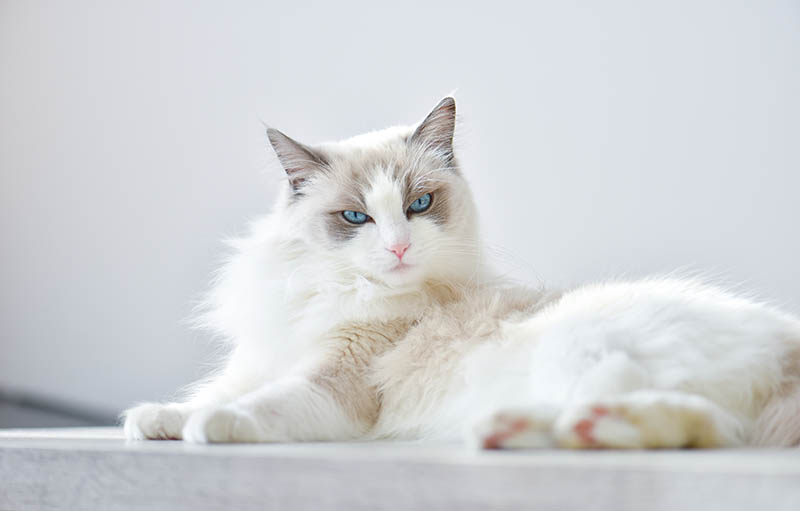

What Is the White Ragdoll Cat’s Personality?
Despite the dazzling, snowy fur, the white Ragdoll is no different from Ragdolls with other colors or patterns. White Ragdolls are just as sweet and gentle as any other ragdoll and are one of the most even-tempered cats.
Unlike some cats, Ragdolls are perfectly fine with being lifted up, and their name even comes from their tendency to fall limp in a person’s arms. They love to be cuddled and will snuggle with you for as long as you want. Ragdolls are social cats. Although they aren’t demanding, they will need a lot of attention in order to thrive.
Due to the Ragdoll’s sweet temperament and social tendencies, it is an excellent choice for families.
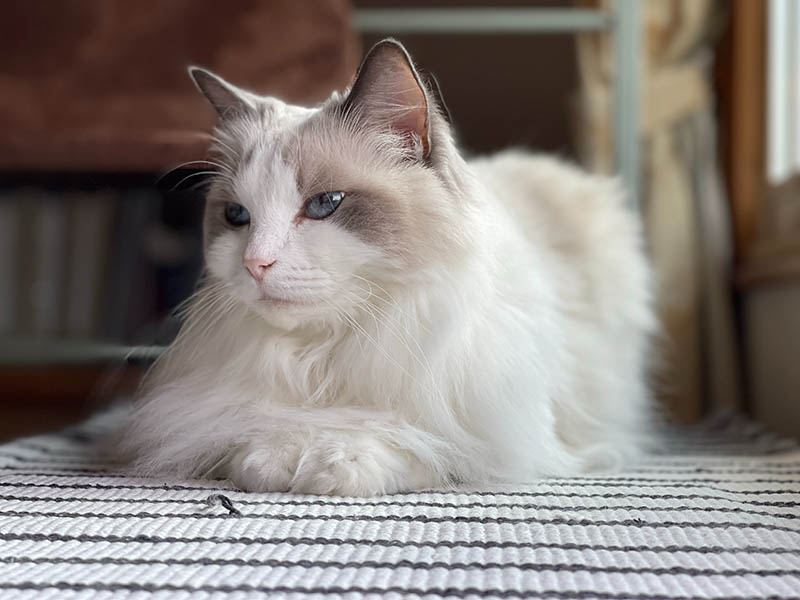
White Ragdolls Have a High Chance of Deafness
Before getting your heart set on a blue-eyed white Ragdoll, there is something you should keep in mind; genetically, they have an extremely high chance of being deaf. Genetic deafness is linked to white hair in cats and is even more closely associated with blue eyes and white fur. Research shows 1 that 17–22% of white cats without blue eyes experience congenital deafness. That percentage shoots up to 65–85% if the white cat has blue eyes.
Such high odds make hereditary deafness a significant concern with blue-eyed white Ragdolls. Even without blue eyes, there is still a decent chance that a white Ragdoll may be born deaf. If you are looking for a white Ragdoll to add to your family, do thorough research to find a reputable, responsible breeder who can work against such enormous genetic odds.
If you adopted or rescued a white Ragdoll and are not sure if it is deaf, there are some signs 2 you can look for. If your cat is unresponsive to sudden sounds, its name, or squeaky toys, it can indicate that your white Ragdoll is deaf. Cats can experience rich and fulfilling lives even if they cannot hear.
However, it will be vital that you keep your cat indoors if it is deaf. Deaf cats cannot hear predators, cars, or other threats and will thus be especially vulnerable.

Other Ragdoll Cat Colors
If you aren’t sure that the white Ragdoll is the right fit for you, there are plenty of other Ragdoll colors to check out.
- Seal Point. Seal point cats have light-colored bodies, often white to fawn, with darker points on their extremities.
- Chocolate. The chocolate Ragdoll can appear almost milk chocolate or coffee-like in color. The base of the coat takes on a fawn appearance, with dustings of brown littered throughout. In some instances, a chocolate Ragdoll will be entirely brown, but that is less common.
- Blue. The blue Ragdoll will appear in a gray, almost muted blue color. If you like the idea of a white Ragdoll, this may be a good option for you, as most of the blue Ragdoll’s body is a cool, off-white color.
- Lilac. Doesn’t a lilac Ragdoll sound lovely? This cat has a frosty gray look sprinkled with a warmer hue, giving it a purplish appearance.
- Cream. Cream is another good option for those on the fence about the white Ragdoll. Cream Ragdolls come in a warm, off-white color, almost like a toasted marshmallow.
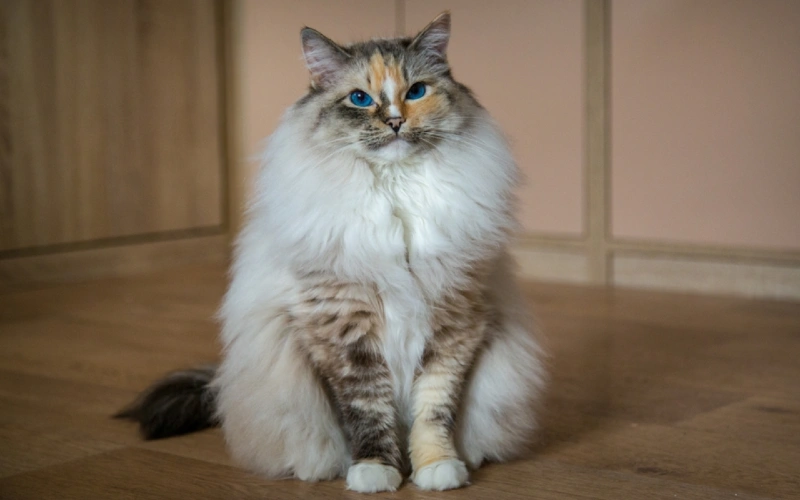

Conclusion
While white Ragdolls technically exist, they can be incredibly difficult to find. White Ragdolls are unique beauties, although they come with a significant chance of hereditary deafness. If a white Ragdoll is in your future, be sure to work with responsible breeders to ensure your cat’s health.
On the other hand, if a white Ragdoll isn’t your preference, there are plenty of other coat colors to choose from. Regardless of its fur, the Ragdoll is a friendly companion that will surely become a lifelong friend.
- https://www.vet.cornell.edu/departments-centers-and-institutes/cornell-feline-health-center/health-information/feline-health-topics/ask-elizabeth-white-cats-and-blindnessdeafness#:~:text=Researchers%20found%20that%20only%2017,both%20eyes%20blue%20are%20deaf.
- https://www.petmd.com/cat/conditions/ears/c_ct_deafness
- https://www.vet.cornell.edu/departments-centers-and-institutes/cornell-feline-health-center/health-information/feline-health-topics/ask-elizabeth-white-cats-and-blindnessdeafness#:~:text=Researchers%20found%20that%20only%2017,both%20eyes%20blue%20are%20deaf
- https://www.petmd.com/cat/conditions/ears/c_ct_deafness
Featured Image Credit: Liliya Kulianionak, Shutterstock
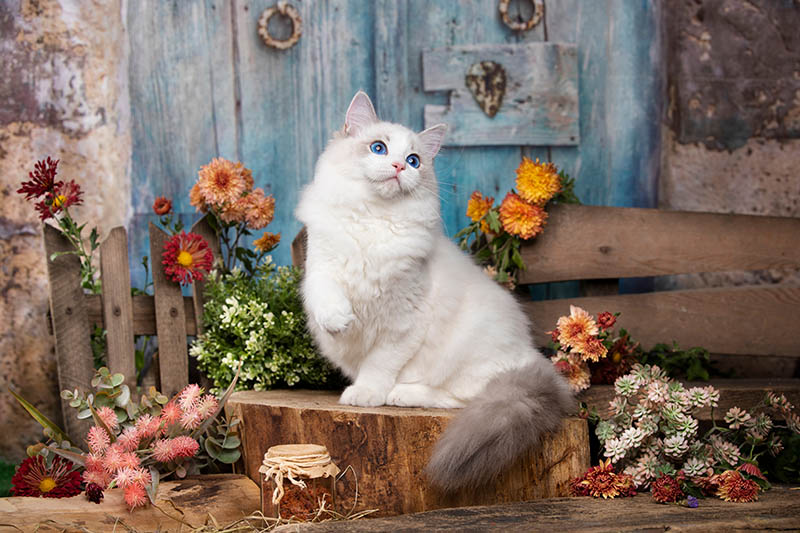






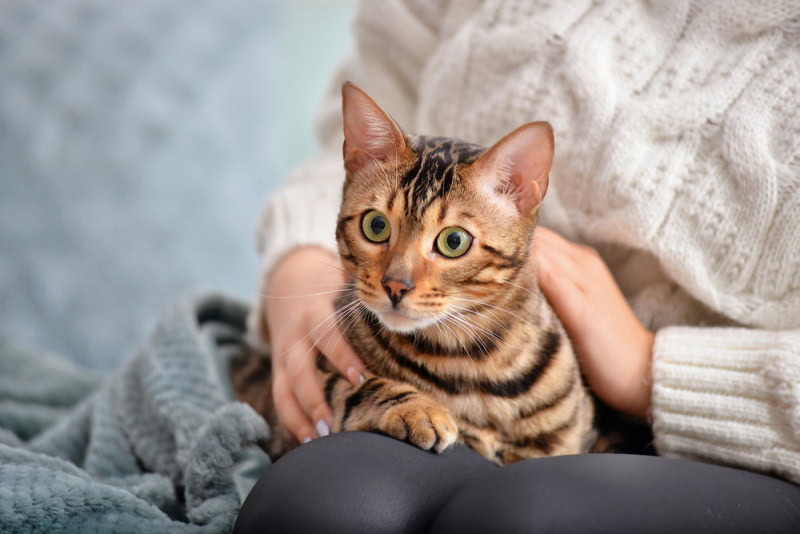
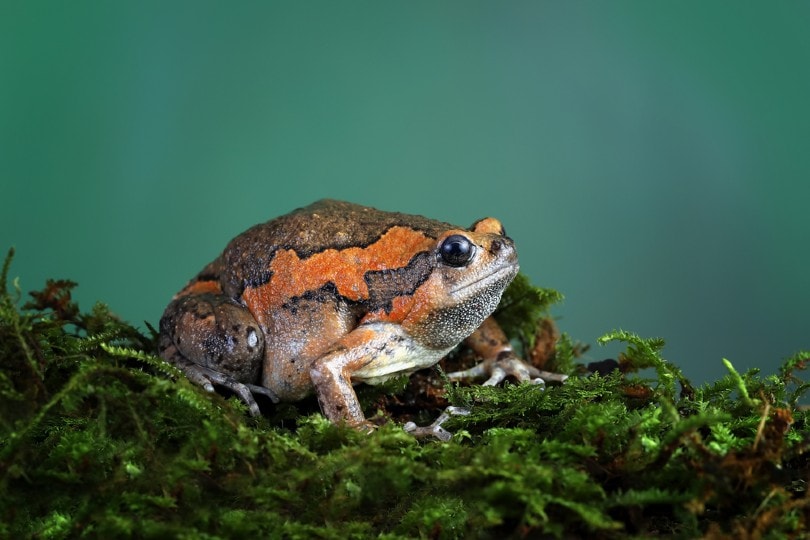



2 Responses
This is a fantastic breakdown of white Ragdoll cats! Their rarity and the genetic factors behind their pure white coats often lead to confusion, so it’s great to see this topic being explored in detail. One point worth emphasizing is that while white Ragdolls are visually stunning, they may not always meet the breed standards set by organizations like TICA and CFA. This can impact their recognition in shows, even though they have the same affectionate and docile temperament as their traditionally colored counterparts.
Another aspect to consider is their grooming needs—since their pristine coats are more prone to staining, regular upkeep is crucial. Owners might find daily tear stain cleaning and UV protection especially important for these light-colored felines.
Do you think breeders should actively try to produce more white Ragdolls, or should their rarity remain part of their mystique?
Hello Rafayet,
Thank you for your nice feedback. As mentioned in the post, breeding white Ragdolls comes with a huge risk of the cat being born deaf, with chances of being deaf going up to 85% when the cat has blue eyes too. As such we can’t endorse breeding of these cats no matter how gorgeous they are.